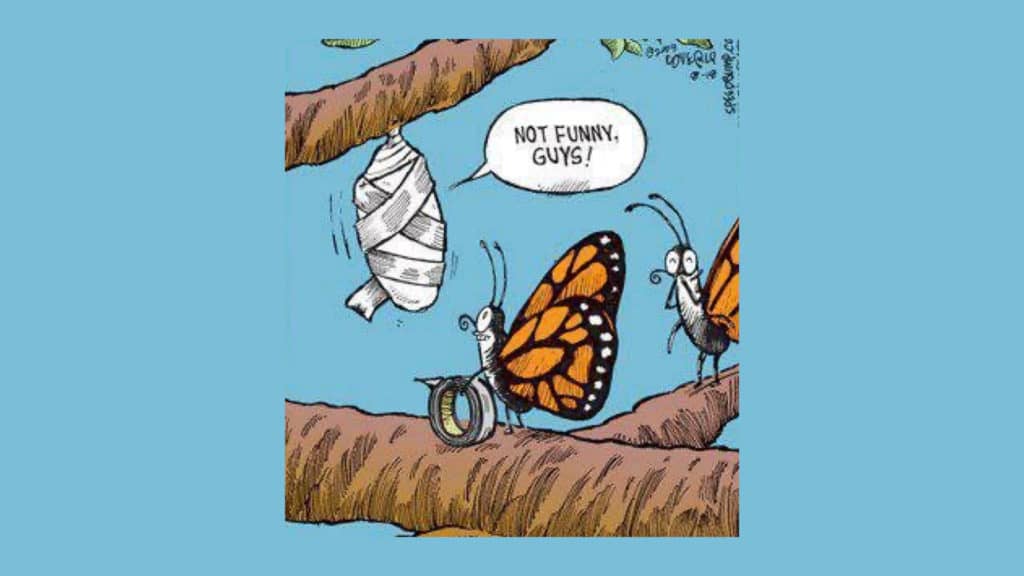uglyhedgehog.com
“Allowing an existing structure to remain in place for too long creates inertia and results in an organization that is maladapted to the opportunities it finds.”
― Rita Gunther McGrath
You are forgiven if you missed the battle of the caterpillars that unfurled during the Covid-19 pandemic. In April 2021, UK-based premium retailer Marks & Spencer (M&S) filed a lawsuit against German-owned discount retailer Aldi. M&S argued that Aldi’s cake, known as Cuthbert the Caterpillar, infringed on M&S’s trademark for Colin the Caterpillar. M&S has held a trademark for Colin the Caterpillar since 2008 and argued that Aldi copied the distinctive features of the cake, including its face, colour, and packaging.
M&S sought a court order to halt Aldi from selling Cuthbert and demanded its removal from Aldi’s shelves. Aldi, however, defended Cuthbert’s uniqueness and pointed out the existence of many similar caterpillar cakes in the market. They argued that Colin’s design isn’t unique and their cake isn’t trying to mimic or create confusion with M&S’s product.
One could argue that there are only so many ways to “skin a caterpillar” cake. Yet, at the heart of this conflict exists a much larger issue. Was legal action the only recourse? M&S could have risen above the fray and evolved the design, perhaps a cake, symbolically, in the shape of a butterfly: the metamorphosis of Colin as he transformed into “Benny the Butterfly”? What if instead of just trying to secure the ever-shifting sands of competitive advantage, M&S invested in a future one? They might look to sustainability. Rather than line the pockets of the lawyers, they might have financed future product lines.
While many organisations claim their brand and products are innovative, they find themselves stuck in a cycle of incremental innovation. Imagine that happened to the caterpillar.
The Caterpillar Conundrum
“What the caterpillar calls the end of the world the master calls a butterfly.”
Richard Bach
After hatching, caterpillars eat their eggshells to fuel their future transformation. Caterpillars outgrow their exoskeleton several times as they mature before something deep within them signals that it is time for a bigger change. This signal starts with a deep impulse, an inkling at a cellular level, programmed deep in its DNA. The cells that initiate the change are aptly called imaginal discs, from the word imagination.
Imaginal cells induce the caterpillar to find a twig and harden its skin, which acts as a cocoon. Then, the caterpillar dissolves into a nutritious liquid that will soon fuel the metamorphosis into a butterfly.
Many organisations are like a caterpillar that never transforms into a butterfly. They are cosseted in their cocoon, unwilling to make the brave leap to metamorphose into something truly transformative and new. They get stuck in exploitation mode, exploiting their current competitive advantage.
This is understandable. It is a bold move to embrace transformation in the face of ambiguity. As Maya Angelou aptly observed, “We delight in the beauty of the butterfly but rarely admit the changes it has gone through to achieve that beauty.” Change is difficult. The transformation phase from one stage to the next means embracing that messy middle, letting go of certain parts of your past and embracing an uncertain future. This is difficult for leaders as they may need to part ways with colleagues who lack the skills required for the future, even if they were stellar performers in the past. Former CEO of Cisco, John Chambers, alluded to this when he said, “Without changing the structure of your organisation, I would argue that [innovation] will not work.”
While still essential, incremental innovation will only sustain an organisation for so long. In a world of rapid change, what was once a competitive advantage will become transient (for more on this, check out our episode with Rita McGrath). Even the most carefully managed organisations will likely lose their edge as customer preferences, technology and competition change.
Incremental innovation remains a critical component for organisations. However, when an organisation only rewards incremental endeavours (recognition, remuneration and promotion), why would anybody want to risk their career with transformational effort? Give the customer a 12-blade razor, a chai-latte-flavoured soda or a 6G Origami phone. By all means, be a fast-moving caterpillar-cake copycat, but invest some of the profits from the incremental present into the transformational future. Don’t use the future to fuel your present.
THANKS FOR READING
The post Confined to the Cocoon: More Ways To Skin A Caterpillar (Cake) appeared first on The Innovation Show.

